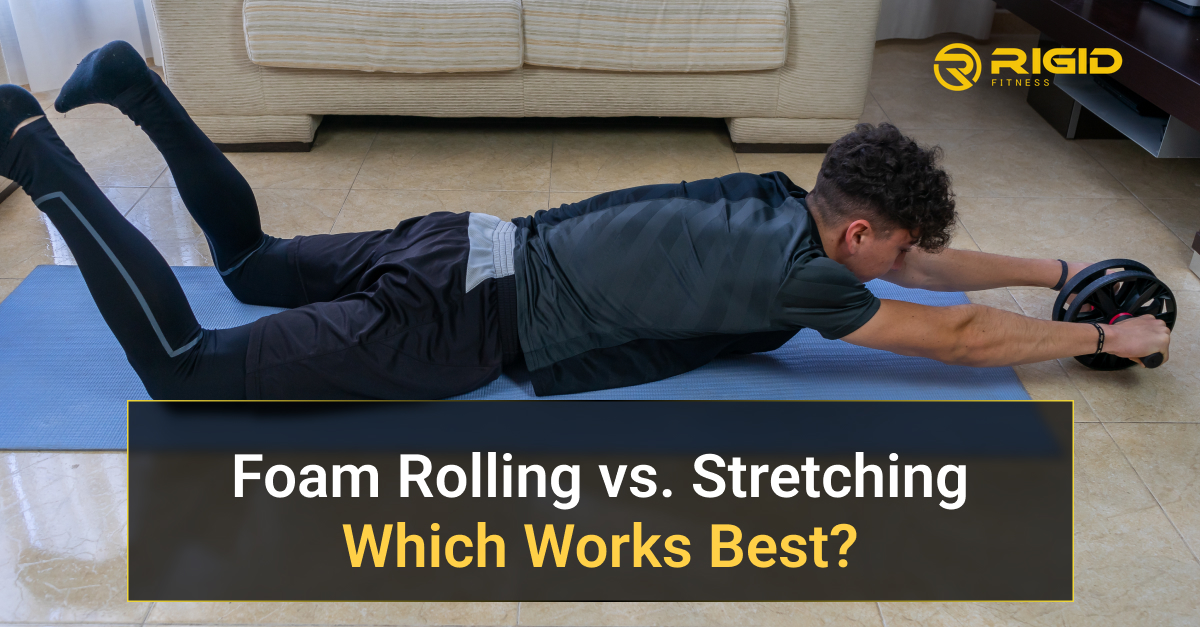

In today’s busy world, working out at home has become more than just a convenience; it’s a lifestyle. And one of the most effective, affordable, and space-saving tools for home fitness is the resistance band. These versatile bands might look simple, but they can challenge every major muscle group, improve mobility, and help you achieve impressive strength without setting foot in a gym. If you’re looking for ways to build a strong, balanced physique, the best resistance band workouts can help you sculpt your body from head to toe, right in your living room.
Let’s explore how resistance bands work, why they’re so effective, and which exercises give you a complete full-body workout.
Resistance bands create tension throughout the movement of an exercise, engaging muscles both on the way up and on the way down. This constant tension increases time under strain, leading to improved muscle growth, endurance, and control.
Unlike weights that rely on gravity, bands allow you to move in multiple planes of motion, pushing, pulling, and rotating in ways that mimic natural movement. This makes them especially effective for functional training and injury prevention.
Here are some of the key benefits of incorporating the best resistance band into your home workout routine:
If you’re new to resistance training or want to upgrade your equipment, check out RIGID FITNESS’s resistance band collection. They offer durable, high-quality options ideal for both beginners and pros.
Before jumping into exercises, it’s important to learn proper technique and safety. Always check your bands for tears or wear, as overstretched or damaged bands can snap. Anchor them securely under your feet or around a stable surface, and maintain control throughout each movement.
Start with lighter resistance and gradually increase intensity as your strength improves. Proper posture, core engaged, back straight, and controlled breathing ensure maximum benefit and minimal risk.
Even before starting your main workout, resistance bands are excellent for warming up. Use them to activate muscles and prepare joints for movement.
Try this quick warm-up routine:
These dynamic moves wake up your muscles and enhance blood flow, setting the stage for a more effective full-body session.
This routine targets every major muscle group and can be done anywhere, no weights, no machines, just your best resistance band and a bit of motivation.
Stand on the band with feet shoulder-width apart, holding the handles or ends at shoulder level. Lower into a squat, keeping your chest up and knees in line with your toes. Push through your heels to return to standing.
Resistance bands add extra tension during the squat’s upward phase, helping to activate glutes and quads more effectively.
You can enhance this exercise using the RIGID FITNESS heavy-duty resistance band, which provides stable resistance for deeper muscle engagement.
Stand in the middle of the band with feet hip-width apart, holding the ends with both hands. Hinge at the hips, keeping your back flat, and lower your torso until you feel a stretch in your hamstrings. Squeeze your glutes to return to standing.
This move strengthens the posterior chain, hamstrings, glutes, and lower back, essential for posture and overall strength.
The RIGID FITNESS resistance band is ideal here, offering the perfect level of tension for strong lifts.
Anchor the band behind you (around a door or sturdy object). Hold both handles at chest height, step forward slightly, and push your arms forward until they’re straight. Slowly return to the starting position.
This mimics the bench press but without weights, building the chest, shoulders, and triceps.
For best results, use the RIGID FITNESS resistance bands, which let you adjust resistance levels for progressive overload.
Anchor the band at chest height and hold the handles with palms facing each other. Step back slightly and pull the bands toward your chest, squeezing your shoulder blades together. Slowly release.
Rows are great for improving posture and strengthening the upper back, especially important if you spend long hours sitting.
Pair this with RIGID FITNESS resistance bands for smooth, controlled resistance that targets your lats and rhomboids.
Place a mini band around your legs just above the knees. Lower slightly into a half-squat and take small steps sideways. Move 10 steps in one direction, then 10 back.
Activates the glute medius and outer thighs, improving hip stability and balance.
The RIGID FITNESS bands are perfect for this; they stay secure and provide consistent tension for lower-body activation.
Stand on the band with feet shoulder-width apart, holding the ends at shoulder level with palms facing forward. Press the bands overhead until arms are fully extended, then lower slowly.
This strengthens the deltoids and triceps while improving shoulder stability.
Using the best resistance band from RIGID FITNESS ensures smooth, even resistance throughout the press motion.
Stand on the band with feet hip-width apart, holding handles at your sides with palms facing forward. Curl your hands toward your shoulders, keeping elbows close to your body. Slowly return to the starting position.
This classic move isolates and builds the biceps, providing great definition.
The RIGID FITNESS adjustable resistance band Set allows you to increase tension as your strength improves, ensuring consistent progress.
Anchor the band under one foot or to a low point behind you. Bend forward slightly, keeping your upper arm close to your body, and extend your arm backward until straight. Slowly return to the start.
Targets the triceps and improves arm tone, perfect for balancing upper-arm strength.
Anchor the band to one side at chest height. Hold the handle with both hands and stand sideways to the anchor point. Rotate your torso away from the anchor, keeping arms straight. Return slowly.
This exercise strengthens the core and obliques, improving stability and rotational power.
Adding core-focused movements to your best resistance band routine builds functional strength that supports all other exercises.
Place a mini resistance band around your thighs. Lie on your back, bend your knees, and keep feet flat on the floor. Lift your hips while pushing your knees slightly outward against the band’s tension. Hold briefly, then lower.
For a balanced full-body routine, try this structure:
Alternate between upper and lower body moves for an efficient circuit. Do this workout three to four times per week, with rest days in between to allow muscle recovery.
To get the most out of your best resistance band exercises, keep these tips in mind:
Consistency is key; when performed regularly, band workouts can deliver results that rival traditional gym training.
Resistance bands aren’t just for strength; they’re also excellent for recovery and mobility. Use light bands for stretching after workouts to improve flexibility and relieve soreness.
Try band-assisted stretches for the shoulders, hamstrings, and hips to release tension and enhance muscle recovery. The stretch bands are perfect for these exercises, helping you stay limber and pain-free.
Functional strength means being strong in ways that support daily activities, lifting, bending, twisting, and balancing. The variable resistance of bands mimics natural movement patterns better than machines or fixed weights.
By engaging stabilizer muscles and promoting controlled movement, the best resistance band helps improve coordination, posture, and joint health. This makes them ideal for all fitness levels, from beginners to athletes looking to enhance performance.
Resistance bands prove that simplicity can be powerful. Whether your goal is to tone, strengthen, or build muscle, they offer a complete solution that fits any schedule and space. You can train your entire body, boost endurance, and stay consistent, all without bulky equipment.
The best resistance band workouts deliver real results when done with proper form and dedication. Combined with quality bands from RIGID FITNESS, you’ll have everything you need for an effective, full-body home training experience.
So, grab your bands, set your space, and get moving, because your home can be the strongest gym you’ve ever trained in.

If you’re into fitness, strength training, or simply making sure your nutrition game is solid, a top-quality shaker bottle is

In the fitness world, there’s a common misconception that more workouts equal better results. Many people push themselves to train

Whether you’re a professional athlete or someone who works out a few times a week, recovery is just as important

